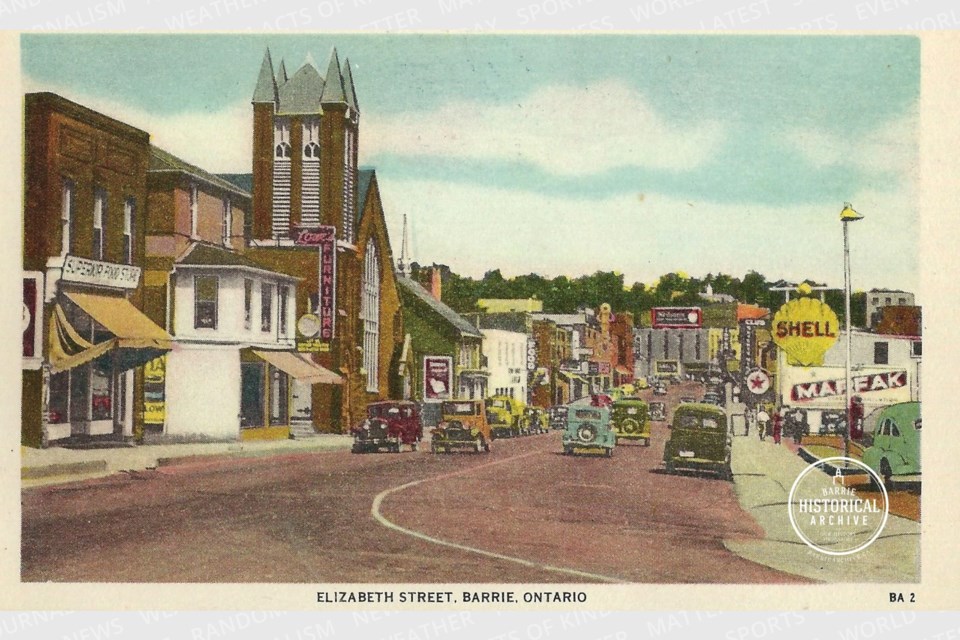The advent of the automobile brought so many new things.
At first, fuel for the new-fangled conveyance was dispensed and sold out of seemingly unconnected businesses and taken away by can.
Soon after, gas pumps began to pop up like mushrooms in front of stores. Customers pumped their own fuel into their vehicle.
Most early automobiles were chauffeured. The average person didn’t have the ability to operate a horseless carriage and they certainly didn’t have the know-how to deal with the near constant mechanical breakdowns. That’s where the chauffeur came in.
In time, a new occupation arose and suddenly every young man wanted to become an auto mechanic. Automobile garages began to appear everywhere as more people took the wheel themselves and dispensed with the chauffeur.
Then somebody got very smart and decided to combine these automotive necessities. The service station was born.
Free water and air. Filling and oil checks done by an attentive young man smartly dressed in a chauffeur-esque uniform. Mechanical aid, maps and sundries, all available in one place. Genius!
Before the modern-day convenience store, the gas station was the go-to place for late-night needs. The business model expanded to include things like snacks and cigarettes. Stations often remained open 24 hours a day.
These service stations, located in quiet sections of town, usually staffed by one young person, and most often devoid of customers, became rather convenient for a new breed of bandit, the gas station robber.
Small towns like Barrie were not immune to this type of crime. In fact, small towns were favourites among regular thieves. If you were going to hit multiple gas stations, they had to be in random quiet communities and certainly not your own.
It was a little after four in the morning, on Nov. 8, 1938, when the attendant at the Shell station at Elizabeth and Bradford streets discovered this for himself.
George Sturman had been on the 11-8 shift and had just finished scrubbing the station floors. As he took the pail of soapy water outside to empty, he saw what he thought were two hitchhikers walking north on Bradford Street. One of them pulled a gun from his hip and changed George’s mind.
The pair marched George back into the store and proceeded to rob him of the station’s money and $13 of the attendant’s own money. After demanding that George open the safe, a task he was unable to perform, they took him to the washroom and put him inside.
The second robber also brandished a small gun as the pair left. As they put George inside the washroom, it struck him as odd that they appeared to know where it was located. The washroom was not easily visible.
After hearing a previously unseen car start up outside, George knew the robbers had fled and he left the washroom to phone the police. The responding officer took off in the direction George thought most likely to be the escape route.
Meanwhile, a milk man reported finding a Buick sedan stuck nose first in a deep ditch near the intersection of Highway 90 and Ferndale Road. Inside were some wonderful clues – a gas station receipt from the same Shell Station and a loaded 44-calibre, blue-steel Bulldog revolver.
Better still, the license plate belonged to Clifford Peterkin of Pears Avenue in Toronto. George Sturman later identified the car as having been at the gas station earlier in the evening.
The following week, a warrant was issued for Peterkin’s arrest. He later claimed that the stress of his impending capture caused him to worry endlessly and lose some 40 pounds over it. He and two other young men, Frank Hook and Herbert Gillson, were arrested in Toronto in early January 1939.
All three stood in front of Magistrate Jeffs at the Barrie courthouse later that month and entered guilty pleas. They begged to be sent anywhere other than Kingston Penitentiary.
Magistrate Jeffs pointed out that the maximum sentence for this offence was 14 years in the penitentiary plus the lash. He was moved, however, by the unusually large amount of character references produced and by the fact that the trio had little or no previous crime history.
All three were sent to the Ontario Reformatory in Guelph. Peterkin got 18 months while Gilllson and Hook were each given two-year sentences.
Each week, the Barrie Historical Archive provides BarrieToday readers with a glimpse of the city’s past. This unique column features photos and stories from years gone by and is sure to appeal to the historian in each of us.



